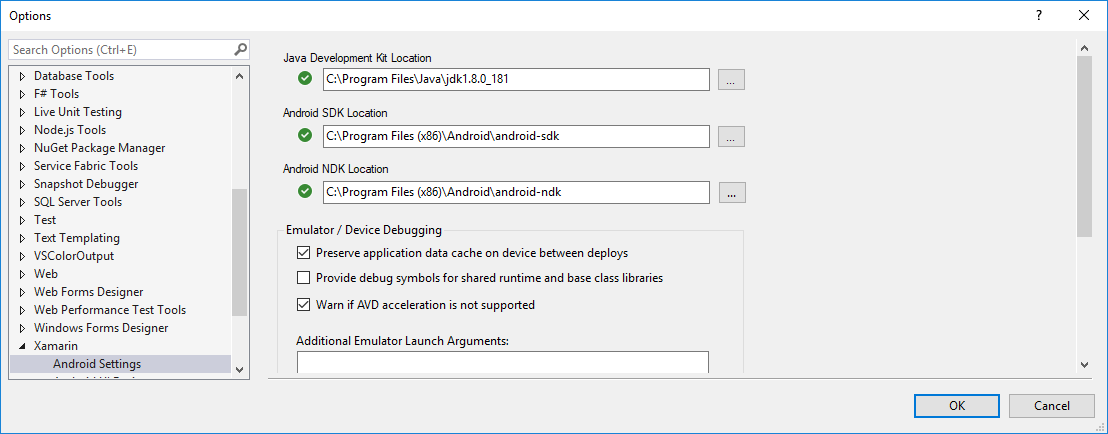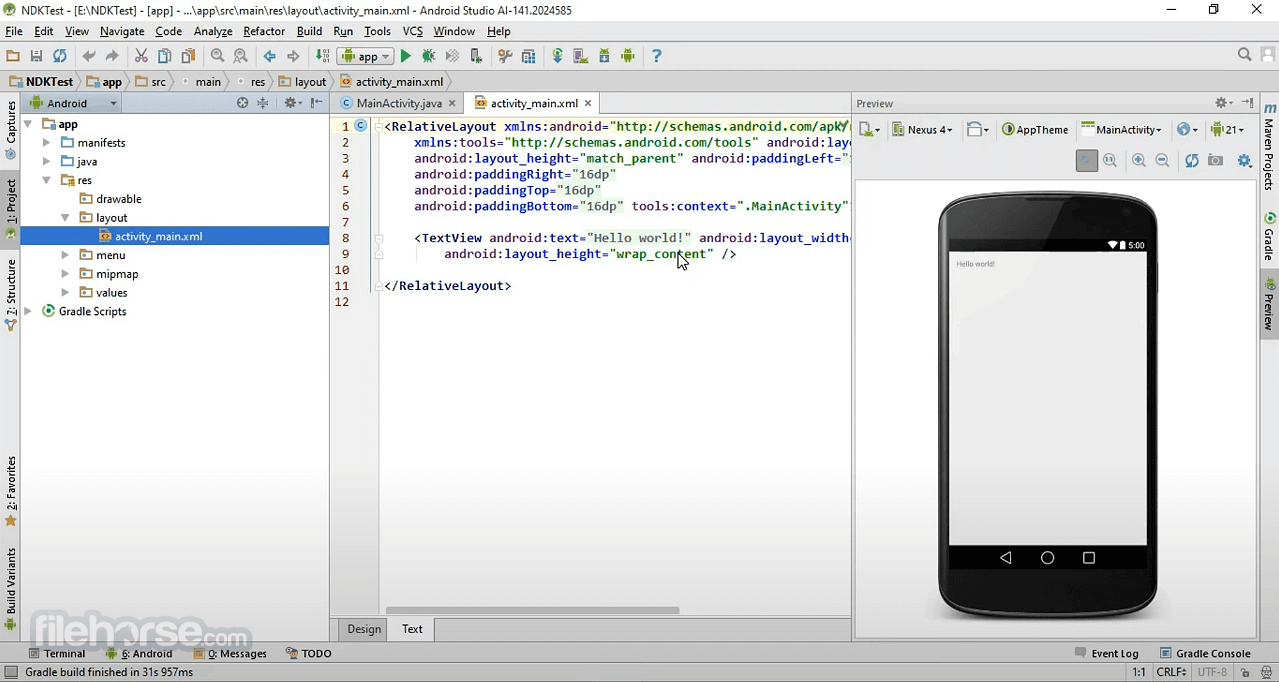

Then now run the application, you will get output for this example as 10.
#Android ndk apps android#
so files created under each armeabi-v7a, armeabi, arm64-v8a ,mips, mips64, x86 and x86_64 folder. Linking errors on Android with OpenCV 3.4. Īnd obtained output is displayed in screen by passing to TextView.Īnd don’t forget to add the library which you specified in Android.mk file asįinally build the project again (Ctrl + f9), you will find the. Here I given two integers input through a, b and get output from variable res. TextView textView = (TextView) this.findViewById(R.id.tv) Res = NativeClass.example(((int) a),((int) b)) Then, in main activity pass the input and get output for native class file. Now build the project again **(Ctrl + f9)**, you will find the **armeabi-v7a, armeabi, arm64-v8a ,mips, mips64, x86 and x86_64** folder created inside jniLibs. To know detail about this file read from this link Īpplication.mk which describes the native modules that your app requires.ĪPP_ABI := armeabi-v7a armeabi arm64-v8a mips mips64 x86 x86_64 LOCAL_SRC_FILES := application_com_ndkapplication_NativeClass.cpp JNIEXPORT jint JNICALL Java_application_com_ndkapplication_NativeClass_exampleĪnd for this example no need to add any function in its header file.Ĭreate a new file named Android.mk and Application.mk in Jni folderĪndroid.mk file is to describe your sources to the build system. Here I am for simple example just adding two numbers and returning value to android java.Īpplication_com_ndkapplication_NativeClass.cpp #include c file of same name of header file in jniĭelete everything before **JNIEXPORT line** in this file and **add header file name** alone. You will find jni folder created and a header file will be created with the name you specified in terminal before as shown below jni -Generate JNI-style header file (default) When you build, you will find the class file created under build like this, Here I written function as example and given two integer input to it,
Write a simple calling function with function name and input for the function, In your module (app-level) Gradle file (usuallyAnother weird problem is that the logcat terminal shows output for the hello world demo app, but for my tensorflow-lite app, there is no output to logcat terminal, it just remains blank. Here I created java file named NativeClass I also tried building the android demo app hello world at the same API24 level, and it runs on both the phone and the emulator.
#Android ndk apps code#
Now, create a new Java Class file under a app/src/main/java , The Android Native Development Kit (NDK) is a companion tool to the Android SDK that lets build performance-critical portions of apps in native code or port. Now you will find under app-build–intermediates–classes–debug folder, as shown below. Next, again Build – Make Project (Ctrl + f9). Path will extend from project path to main. Then in Terminal, initially it will contains project’s path

Your project will be successfully build and will get BUILD SUCCESFUL in message Then, Press Build – Make Project (Ctrl + f9).

In gradle – local properties add location of sdk path like sdk.dir=F\:\\gowtham\\Android\\sdk Based on the features of the Smart Life App SDK demo app, the IPC SDK demo app is added with the control panel module for IPCs to implement the following pages: Live streaming: P2P connections of IPCs, live video playing, video recording, screenshots, video talk, and more. NDK r16 is a big milestone for us, because it's the first release that we're ready to recommend that people start migrating to libc++ More on this later. It is also available in the SDK manager via Android Studio. Next, to integrate NDK with Android Studio, after creating a new android project, The latest version of the Android Native Development Kit (NDK), Android NDK r16 Beta 1, is now available for download. Īfter downloading, give the path in System Environment Variable as variable name “ NDK_PROJECT_PATH” and variable value “location of NDK stored path”.
#Android ndk apps install#
Here I will give process flow for manually install NDK and an example code,īased on your System OS you can download NDK from this location. You can use NDK by manually downloading NDK and build it or through CMake. Using Android Studio 2.2 and higher Native Development Kit (NDK) you can use to compile C and C++ code. Typically, good use cases for the NDK are CPU-intensive applications such as signal processing, game engines, and physics simulation.Getting started with Android NDK with simple example The Native Development Kit (NDK) is a toolset enables us to implement parts of our app using native-code languages like C and C++.


 0 kommentar(er)
0 kommentar(er)
